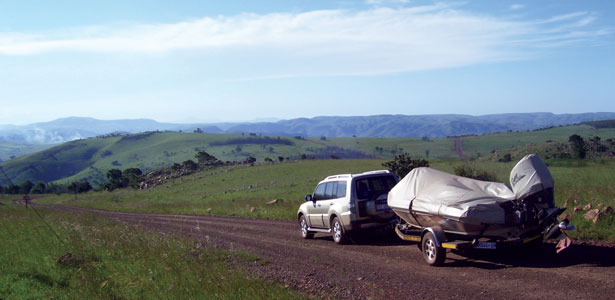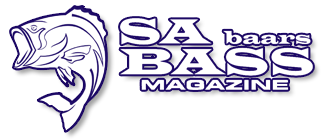Boating
Trailer Tips & Reversing Techniques
- Details
- Written by Craig Fraser

Towing a boat, or any trailer for that matter, is not just a matter of hooking up and heading off. Specialist driving skills are needed and regulations must be observed.
Safe Towing Skills
If you have not towed a boat before, make sure you get some practice before leaving home. Waiting until you are on the road to perfect your safe towing techniques may result in you annoying other drivers, attract bemused spectators especially when you are trying to reverse your boat at the slip or camp site and you may have to contend with poorly maintained roads and bad weather conditions in an unfamiliar and possibly dangerous towing skill.
Learn to Reverse
Reversing is one of the most important towing skills. You will regularly need to reverse your boat 90 degrees into a space, or between to existing boats. Before you leave on your trip, take your tow vehicle and rig to a large parking area (shopping centre or sporting complex car park) on a quiet day and practice until you feel confident. After that, all parking and reversing should not be a problem. This is where the fun begins.
Try this simple technique. Sit in a normal position in the driver’s seat facing forward and use your side mirrors to navigate the trailer. Hold your hand at the bottom of the steering wheel and simply move your hand in the direction you want the trailer to go. Got it, it's that easy!
If the trailer starts going off track to the passenger side, the trailer needs to come back to the driver’s side. You need to bring it back in line by moving the bottom of the steering wheel to the driver’s side. Just how far to move the steering wheel will depend on how much you need to bring the trailer back in line. By keeping an eye on the trailer and continually moving the wheel in short moves the trailer will stay in line.
Your brain seems to co-ordinate with direction better this way, rather than holding your hand at the top of the wheel and moving the wheel in the opposite direction – I’ve never been any good at rubbing my stomach and patting my head at the same time!
Like everything, reversing takes practice, so get down to your local open space and try reversing in a straight line at first using the above method. Then as you get the hang of it try turning the trailer and follow it with your vehicle to achieve ninety degrees. It all takes practice so doesn’t be disappointed if you don't get it first go. Should you have a boat partner, use him to assist you in directing, also to ensure that there is not potential danger to your rig or any kids that may be playing in the area.
The simple rule of thumb is that steering works in the opposite way to normal, so if you want the boat to go to the left, turn the steering wheel in your car to the right ('right hand down'). Another tip is to place both hands at the base of the steering wheel, point your thumbs, left and right respectively and this will indicate the direction the wheel needs to be turned in relation to the direction you wish to maneuver the trailer.
Overtaking
Another safe towing skill is overtaking. You will not have as much power as normal when you are towing a boat, so allow adequate distance for the reduced acceleration of your tow vehicle. Also make allowances of the extra length of you unit when veering left back into the driving lane after having overtaken the respective vehicle. If you are being overtaken, slow down or at least maintain your current speed and keep to the left but not too far as many boat trailers are wider than your standard tow vehicle and you need to ensure that the boat trailer wheels do not drop off the main surface as you will often or can experience damage to your side wall of your tyres by doing so.
Avoid Trailer Sway
Crosswinds can be a problem when towing (especially in the Cape); the combination of high speed and crosswinds can cause trailer sway, which dangerously destabilises both towing vehicle and boat trailer. When you are driving you will feel it and a glance in the rear-view mirror will confirm the problem - do not brake suddenly as this will only exaggerate the problem. Rectify the situation by easing back on your speed, and if necessary brake very gently to avoid compounding the problem, and then increase your speed again gradually to a safe speed.
Some bass boats are packed heavy at the rear of the boat in a attempt to get the best performance out of the rig as possible, and this means that the weight at the front of the trailer is very light, which may cause the rig to sway, so repack your boat with more weight in the nose, and create more weight on the ball and this will definitely reduce trailer sway.
Be Courteous to Other Drivers
When towing you should travel as safely as the flow of traffic will allow. We have all seen vehicles towing along a main highway at about 60 km/h, with an endless stream of traffic following. If you desire to travel at a slower speed and the traffic does build behind you, you should regularly pull off the road to let the traffic flow by.
Allow for Extra Weight
Towing a boat will make the acceleration and braking on your vehicle much slower. A couple of driving techniques can help. On long, steep uphill sections, select a gear that the towing vehicle is comfortable with. Keep the revs to the higher end of the operating range to help prevent overheating. Avoid letting the engine lug at low revs in a higher gear. On long, steep downhill sections, keep your speed under control and keep the brakes as cool as possible. Select a lower gear and let the engine do as much braking as possible. Many boat trailers are fitted with brakes, which work very efficiently on long downhill section.
Another aspect far too often over looked by anglers is the routine maintenance of the wheel bearings - this should be done prior to any long trip and at a minimum annually. While on the road, ensure that the hub is not hot - they may be slightly warm, but never hot, which would be a sign of a bearing that is about to seize.


 Visit us our
Visit us our